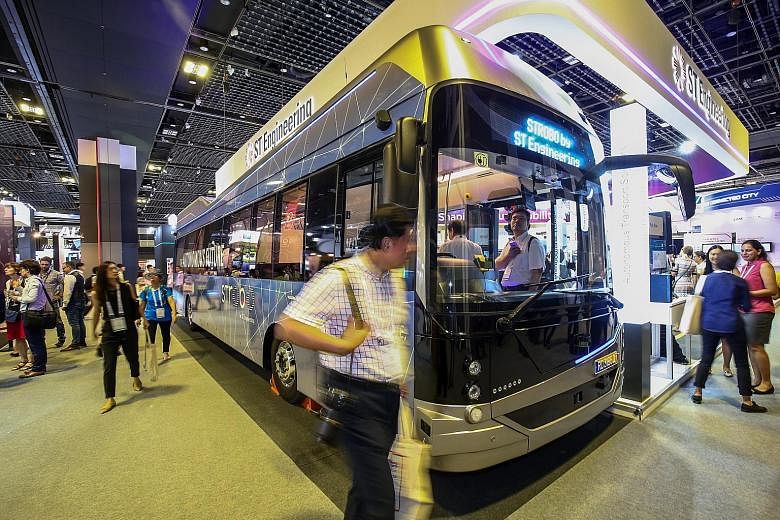Workers on Jurong Island will be able to hitch a ride on two 12m-long autonomous buses from the island's checkpoint to their workplace from around the middle of next year.
At an event to launch the driverless bus yesterday, the bus' developer ST Engineering said it has formed a consortium to bid for a contract to operate autonomous buses in one area of Punggol, Tengah and the Jurong Innovation District from 2022.
Partners for the bid include public transport operator SBS Transit and German firm Siemens.
ST Engineering made the announcements at the 26th Intelligent Transport Systems World Congress at the Suntec Singapore Convention and Exhibition Centre.
The Strobo Series 12 bus can carry up to 80 passengers. It has been undergoing trials without passengers on Jurong Island since June.
During the public trials, which will start around June next year, the bus will initially travel at a speed of about 20kmh. The speed is expected to increase to 50kmh eventually.
There will be a safety driver to monitor the vehicle's operations, if needed, and passengers will need to fasten their seat belts on the bus.
Other partners involved in developing the bus include the Institute for Infocomm Research.
It is the third autonomous bus model that has been unveiled by ST Engineering, after the firm's 5m-and 7m-long variants.
Dr Lee Shiang Long, president of land systems at ST Engineering, said the new bus will have an advanced cyber-security system and be able to provide for smoother rides as compared with the smaller variants.
While Dr Lee said there has not been any accident across ST Engineering's autonomous buses, more time is needed to improve its 7m-and 12m-long autonomous buses.
"There is a lot of engineering effort still required to ensure the safety and reliability of the buses to perform day-to-day operations," he said. "We are really gearing towards operational deployment, so we are considering a lot of other things such as redundancy, because when certain parts fail, we need to make it work."
However, the 5m-long variant is now ready for deployment on a wider scale, he added.
ST Engineering will be deploying a few of the buses in Japan next year. Possible locations identified for deployment include an area in Tokyo and on Sado Island near Niigata.


